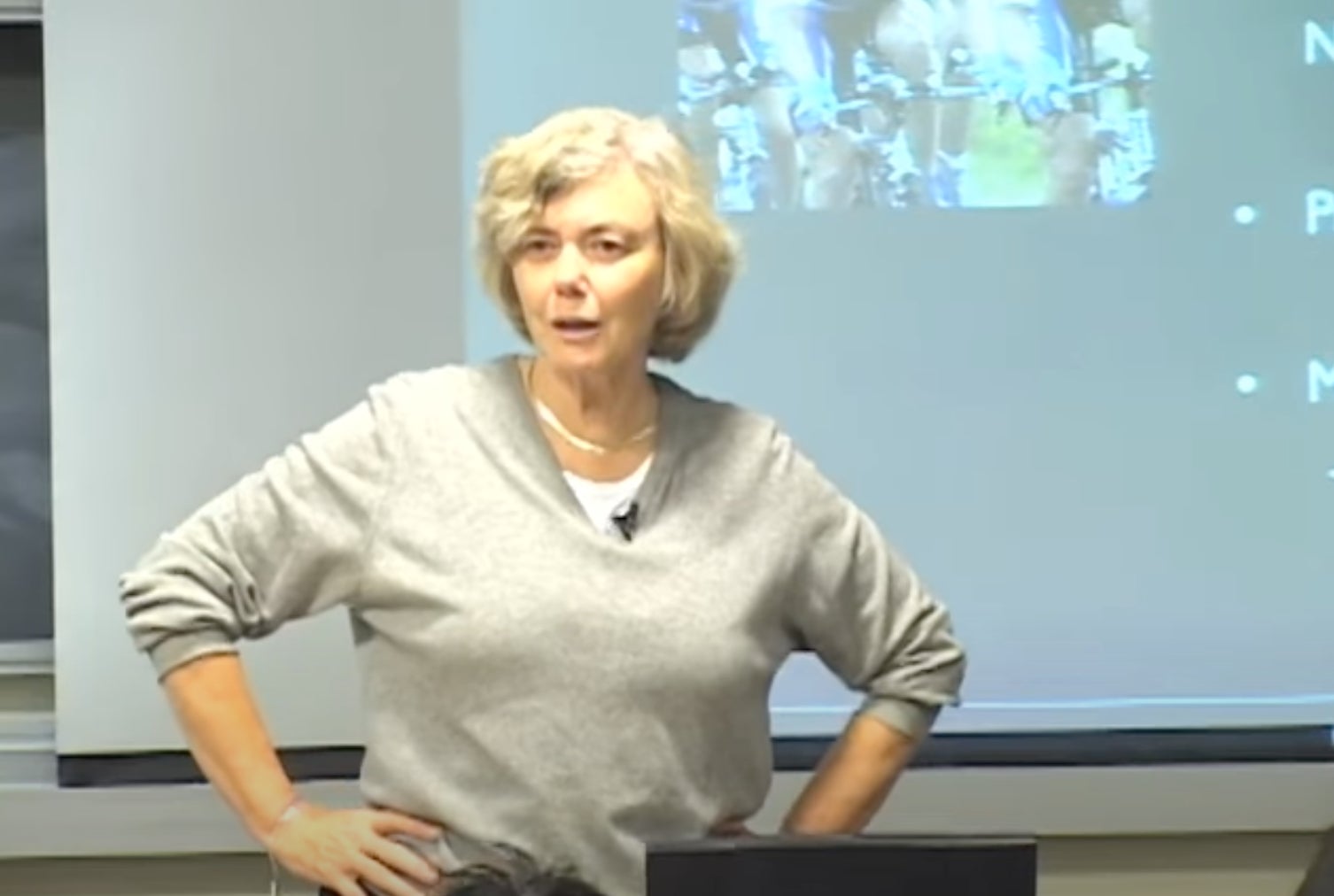The Eisenhardt Method: Building theories from case studies
The making of management research


The theory of the case
In 1989, Kathleen Eisenhardt, an untenured assistant professor at Stanford University, published a paper that would lay the foundation for decades of management research. Titled “Building Theories from Case Study Research,” the paper laid out an eight-step process for turning in-depth case studies on a small number of companies into concrete theories about organizations that could be tested and studied.
Her approach, which has come to be known as the “Eisenhardt Method,” has proven controversial. Many academics are skeptical that case study research can produce universal theories just by analyzing a handful of companies. Others quibble with the specific strategies Eisenhardt suggests, or bristle at what they see as a too-rigid template for doing research. Dozens of papers and book chapters have been written criticizing the method, and Eisenhardt has written several follow-up articles to defend and revise her approach.
Let’s study the case.
By the digits
4-10: Number of cases Eisenhardt recommends studying to develop a theory (although it’s not a strict rule)
6: Weeks it took Eisenhardt to write “Building Theories from Case Study Research”
“Virtually zero”: Revisions Eisenhardt said she got from reviewers at the Academy of Management Review on her original paper
100+: Articles Eisenhardt has published in research and business journals, many of which rely on the method she proposed
70,000 and counting: Articles that cite “Building Theories from Case Study Research”

What is the Eisenhardt Method?
Eisenhardt recommends eight steps for developing theories from case study research:
- Getting started. Pick a focused research question and define any constructs (e.g. conflict, power) you want to study.
- Selecting cases. Choose cases that are similar enough to control for any extraneous variables, but have one key difference you want to study (e.g. eight mid-sized tech companies in San Francisco that recently replaced their CEOs—four of which are highly successful and four of which are failing).
- Crafting instruments and protocols. Combine multiple data sources (e.g. interviews, observations, surveys) and make sure there are multiple researchers on your team so that you’ll get many complementary perspectives to help build your theory.
- Entering the field. Analyze your data even as you’re collecting it. If you start to notice some new, interesting phenomenon emerging, feel free to change your data collection methods or add new cases to study it more closely.
- Analyzing data. Combine “within-case” analysis, where you describe what happened in a single case in great detail, with “cross-case” analysis, where you look for similarities or differences between cases, to find patterns in the data.
- Shaping hypotheses. As you start to develop a hypothesis, check how well it fits the data in each individual case and in all your cases as a group. Keep tweaking your hypothesis to get a better fit, and constantly check your evolving theory against the data.
- Enfolding literature. Compare your emerging theory to any existing research on the subject and incorporate contradictory research to revise and strengthen your own theory.
- Reaching closure. Stop adding cases, and stop revising your theory, when you start noticing each new case or revision is yielding minimal improvements.

Which of these topics has NOT been studied using the Eisenhardt Method?
A. Product marketing in the keyboard synthesizer industry
B. Flavor design in the hard seltzer industry
C. Innovation in the civilian drone market
D. Hiveminds among soldiers on aircraft carrier flight decks
Find the answer at the bottom!
Kathleen Eisenhardt: Mother of the Method
Kathleen Eisenhardt developed her theory-building method out of necessity. In 1988, when she was co-authoring her first case study papers, “there were few published qualitative studies and almost no guidance on how to execute theory-building research,” she wrote in 2021. To make matters worse, quantitative researchers—the champions of “hard” science, who rely on numerical data and mathematical models—looked down on case studies and other forms of qualitative research, which rely on descriptive data from interviews, observations, and so on, as “storytelling.” To Eisenhardt instead, they revealed insights that would get lost in statistical analysis.
So in 1989, Eisenhardt wrote “the paper that I wished that I could have read before I began theory building from cases.” Her method emphasized the importance of sticking to the data and encouraged researchers to develop testable theories in an effort to appeal to the quantitative research community. Published in the Academy of Management Review, it quickly became a manual for other researchers looking to publish case study papers in management journals.
Eisenhardt herself built a career at Stanford’s Graduate School of Business by conducting case studies of Silicon Valley tech companies and developing theories of management in what she calls “high velocity” environments, where demand, competitors, technology, and regulation change quickly. “I am what I study,” a 75-year-old Eisenhardt told a group of University of Washington students in 2020. “I drive a sports car. I like things fast.”
Brief history
1848: An accidental explosion drives an iron spike through the skull of railroad foreman Phineas Gage. His doctor records how the resulting brain trauma utterly changes Gage’s personality, which becomes one of the most famous psychological case studies of all time.
1855: French sociologist Pierre Guillaume Frédéric Le Play becomes the first case study field worker after he lives with a series of working class families to observe the impacts of industrialization.
1900: Sigmund Freud publishes The Interpretation of Dreams, in which he uses multiple case studies of his Viennese patients to develop his theory of the unconscious.
1967: Barney G. Glaser and Anselm L. Strauss publish Grounded Theory, an influential book that sought to legitimize qualitative research.
1984: Social scientist Robert Yin publishes the first of six editions of his book Case Study Research: Design and Methods defending the value of case studies and suggesting a more rigorous approach to conducting them.
1989: Our star (paper) is born! Eisenhardt publishes “Building Theories from Case Study Research.”
2011: Economist Ann Langley and management researcher Chahrazad Abdallah coin the phrase “the Eisenhardt Method” in a paper examining the most commonly used approaches to case study research.
2021: After three decades of defending and revising her theory building strategy in academic journals, Eisenhardt updates her method in a paper titled “What Is the Eisenhardt Method, Really?”
Quotable
“The principle ‘Let’s get it down to something we can count!’ does not always formulate the best research strategy; ‘Let’s see now, what have we here?’ may point to a more promising program.”
—Philosopher Abraham Kaplan defending the value of qualitative research in his 1964 book The Conduct of Inquiry: Methodology for Behavioral Sciences

The Eisenhardt Method revisited
Last year, Eisenhardt published “What is the Eisenhardt Method, really?”, a paper reexamining her theory-building approach after 32 years of debate and development. Eisenhardt, by then a tenured professor at Stanford University, mostly stood by her original article, but pushed back against some of the ways she says it has been misinterpreted and misapplied over the years.
Her biggest qualm is with those who see the method as a “rigid template” defined by superficial boxes researchers need to check. The method, Eisenhardt insisted, doesn’t require anyone to use a specific number of cases or a specific type of data. And it doesn’t require researchers to study the performance of management teams, even though that’s how Eisenhardt herself uses it. “Admittedly,” she wrote, “it can be challenging to discern from the outside what the Method is versus what reviewers want versus what are research choices.”
Instead, Eisenhardt wrote, her method is a flexible set of strategies case study researchers can use to develop convincing theories. The only point on which she rigidly insists is that a good theory “balances parsimony (not complicated spaghetti diagrams), accuracy (captures the core features of the phenomenon), and generalizability (relevant beyond the immediate setting), is logically coherent… and is (hopefully) surprising!”
Fun fact!

Watch this!
This is the end result of the Eisenhardt Method: After studying executives at successful and unsuccessful tech companies, Eisenhardt lays out her theory that the ideal management team has three to five members, each of whom comes from a different professional discipline, and who have a diverse range of ages and backgrounds.
Poll
Are you, like Kathleen Eisenhardt, what you study?
💬 Let’s talk!
In last week’s poll about immortality, the search for the fountain of eternal youth didn’t prove very popular—but to the 20% of you who’s ready to go on an adventure, send us a postcard when you get there!
Today’s email was written by Nicolás Rivero (the Rivero Method would emphasize taking frequent breaks for snacks), edited by Susan Howson (the Howson Method would also emphasize this), and produced by Morgan Haefner (the Haefner method is the same, just with coffee).
The correct answer to the pop quiz is B., Flavor design in the hard seltzer industry. Unfortunately this hasn’t been studied—but it should be!